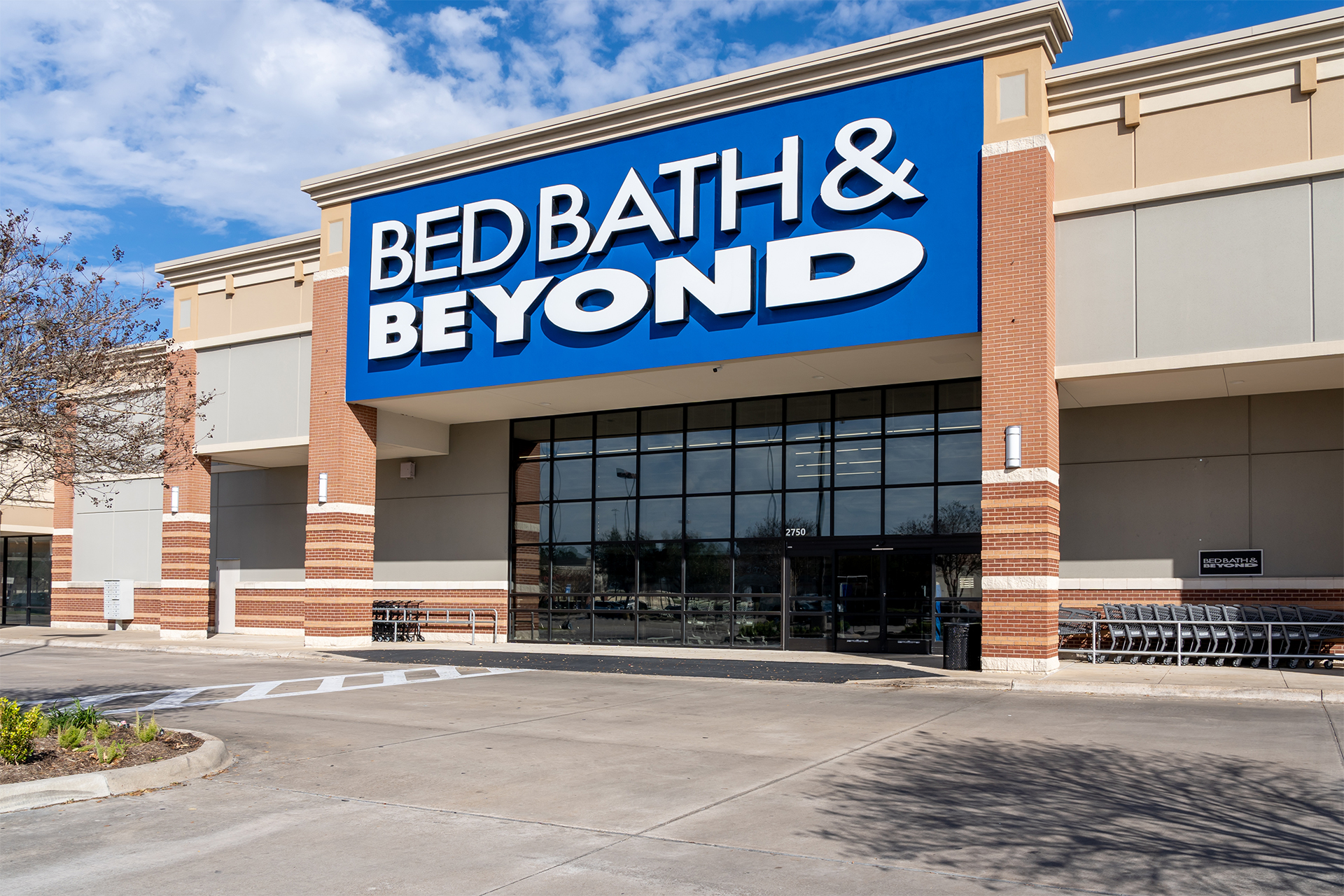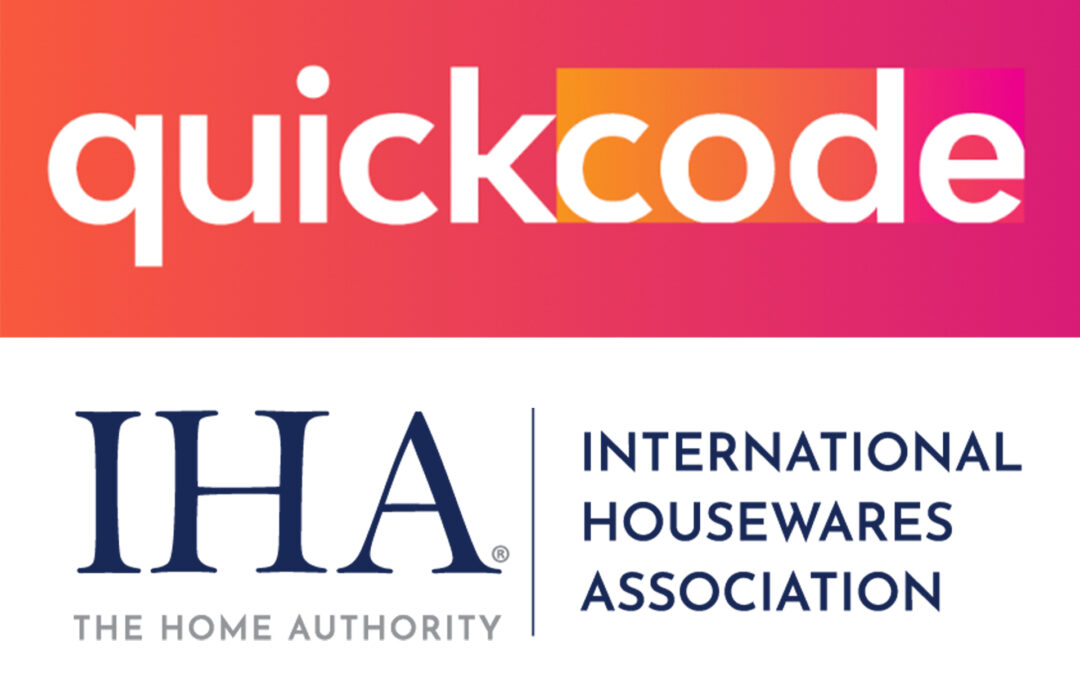The emergence and rapid evolution of Beyond, the operating entity forged in 2023 from the original Overstock.com operation after acquiring Bed Bath & Beyond assets, is a unique retail development for the housewares and home décor sectors, one being watched by many companies to see if a business deviating so markedly from the traditional model can work.
Indeed, Beyond’s decision to offer securities in the form of blockchain tokens brings another twist to the ongoing saga that already was rife with incident, including a successfully completed partnership arrangement with Kirkland’s, a failed agreement with The Container Store, and the recent sale of the Zulily operation completed just last year.
Back in 2024, Beyond executives pointed to fourth-quarter financial results as being a critical gauge of how the company is achieving its goal to move forward as an asset-light operator and consortium of aligned business developed to serve consumers through life stages and for just about every need a homeowner might have.
In the fourth quarter, Beyond announced reduced losses but also lower sales, with the company stating it would focus on measures including cost cutting and narrowing its vendor base to move it closer to profitability.
Net loss improved, coming in at $81.3 million, or $1.66 per diluted share, versus a net loss of $161 million, or $3.55 per diluted share, in the year-before quarter, the company reported. Adjusted net loss was $44.5 million, or 91 cents per diluted share, versus an adjusted net loss of $55.4 million, or $1.22 per diluted share, in the year-previous period. Net revenue was $303.2 million compared to $384.5 million in the year-prior quarter. Still, Beyond came up short of a Wall Street estimate for an adjusted diluted earnings per share loss of 74 cents while missing a revenue estimate by 7.22%.
More Surprises
With Beyond, surprises have become commonplace. On March 10 of this year, not long after the fourth-quarter sales results became public and after an investment community event in which he participated, Beyond terminated Dave Neilson, the company president, as revealed in a statement with the United States Securities and Exchange Commission. In an announcement stating Neilson was no longer with the company, Beyond revealed Marcus Lemonis, the company’s executive chairman, had taken on the role of principal executive officer. It also announced the appointments of Leah Putnam, former vice president of finance and controller, as chief accounting officer; and Alexander Thomas, former senior vice president of finance and corporate development, as COO.
In announcing the executive changes, Lemonis said, “The last year has been about identifying Beyond’s strategic priorities of delivering significant improvement in the key metrics of adjusted EBITDA, gross margin and reduced fixed costs as well as unlocking the value of our blockchain investments. We are committed to making money and returning this business to growth and will not let any obstacles deter that goal. This leadership team is best suited to carry out our mandate of delivering profitable commerce.”
At the same time, Lemonis, the reality TV star and Camping World chief who took the reins of Beyond a few months after its Bed Bath & Beyond, has been investing in the company and has amassed a considerable proportion of the stock. He has made a point of not taking a salary for his Beyond position and relying on the company growth and profitability to generate his payday.
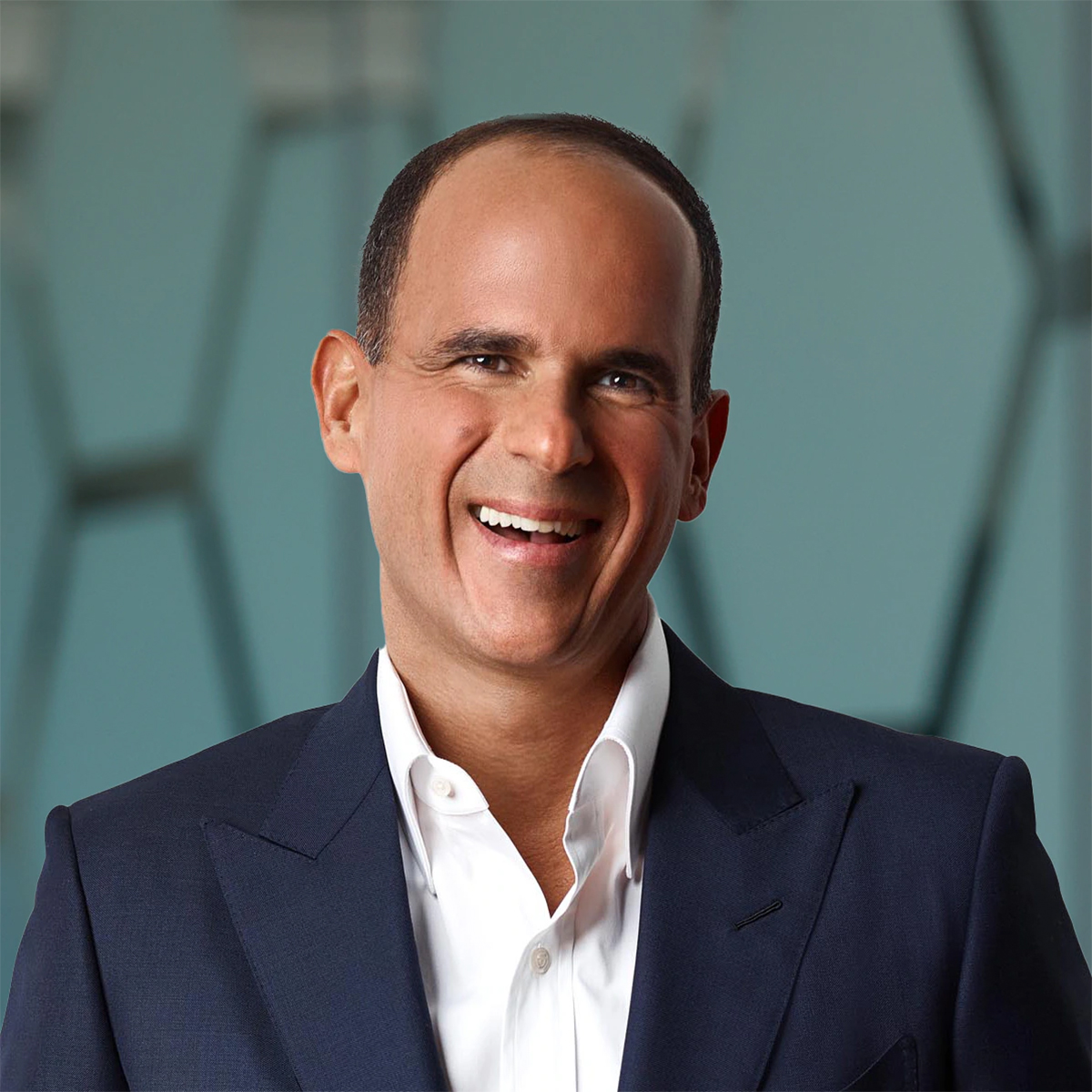
Marcus Lemonis
The last year has been about identifying Beyond’s strategic priorities of delivering significant improvement in the key metrics of adjusted EBITDA, gross margin and reduced fixed costs as well as unlocking the value of our blockchain investments. We are committed to making money and returning this business to growth and will not let any obstacles deter that goal. This leadership team is best suited to carry out our mandate of delivering profitable commerce.
– Marcus Lemonis, Executive Chairman
Even as the executive suite changed, Beyond had changed its retail portfolio. On February 3, the company announced it had cut a deal with BBBY Acquisition Co., acquiring the global rights to the Buy Buy Baby brand for $5 million. In announcing the deal, Beyond stated it planned not only online operations but also brick-and-mortar locations as well. Beyond partner Kirkland’s will develop the physical store presence. The intention is to be flexible in the development process, which could include not only Buy Buy Baby stand-alone stores but also the inclusion of a branded presentation in future Bed Bath & Beyond brick-and-mortar locations, also planned as part of the Kirkland’s investment.
The occasion of the Buy Buy Baby transaction was also the initial indication that Beyond had developed new thinking about its blockchain operations. Some observers believed Beyond would spin off the blockchain parts of the Overstock business as it leaned away from cryptocurrency. The company previously said it would evaluate the blockchain operation, yet the announcement that it would examine tokenizing a portion of the Buy Buy Baby intellectual property was a novel twist. Beyond conceived the measure as a way of establishing a new securities product, one that could provide a few different advantages.
For one, tokenization would help Beyond forge what it referred to as a LifeChain using a blockchain ledger that records all of a consumer’s significant life events that the company could discern through interaction and research, even including birth, medical and educational records, life milestones such as home purchasing, financial products acquired and insurance purchased, as well as retail activity. The LifeChain would meld a consumer’s financial and online activities into a single, secure digital wallet supported by Salesforce Agentforce technology.
Beyond followed through on that idea in late March as it announced the online relaunch of Buy Buy Baby and a promotional event for the one-year anniversary of Overstock’s return after Bed Bath & Beyond superseded it at its launch. The replacement of Overstock by Bed Bath & Beyond on the company’s existing platform began an internal conflict at the company that saw the exit of the then CEO and the decision to create a new Overstock virtual operation initially run on a single laptop computer.
Along with the two banner events, Beyond announced a crowdfunding offer of a tokenized digital security linked to certain Buy Buy Baby intellectual property and another linked to Overstock intellectual property on the tZERO platform, which had been spun into a separate entity by Beyond after having been developed by the company and in which it retained a substantial share.
The offerings should be considered as distinct, Lemonis said in a live March 24 online event on tokenization. On April 24, Beyond will offer the first token as it launches Overstock’s anniversary ‘O’ event. On April 1, the company will start reaching out to all Beyond stockholders to provide access to the token issue. Then, on April 24, Beyond shareholders will get a preferred price on the Overstock token, Lemonis said, emphasizing that the company wants them to feel rewarded. He added that the token’s design is such that the return should be significant and attractive versus other investment vehicles. Beyond will attach special access to sales and first looks at new products to the token. The process will be equally applied to the Buy Buy Baby token, which will be issued on May 8, the same day as the operation’s grand opening event. The Buy Buy Baby site is already up and running, it should be noted, but the token offer will hit as the company rolls out its grand opening promotion on that date.
Lemonis said tokenization is part of his plan to develop a community of investors, customers and perhaps even vendors who are deeply involved with the banners and will support them based on the advantage provided in return on their investments, as well as retail and business interactions and incentives.
“Brands are built on communities, and communities are built on interests,” Lemonis said.
As it begins delivering tokens to shareholders and others, Beyond hopes to learn more about and prove out the monetization of its various assets. However, plans don’t end there. Lemonis said the monetization of other assets, whether it is the company’s GrainChain business, which offers services to the agricultural sector, or the partial ownership in Kirkland’s. At the same time, Lemonis said Beyond is rethinking its Bed Bath & Beyond business in Canada, considering what it might create tokens to monetize operations there, even offering tokens to vendors to create something like a joint venture arrangement.
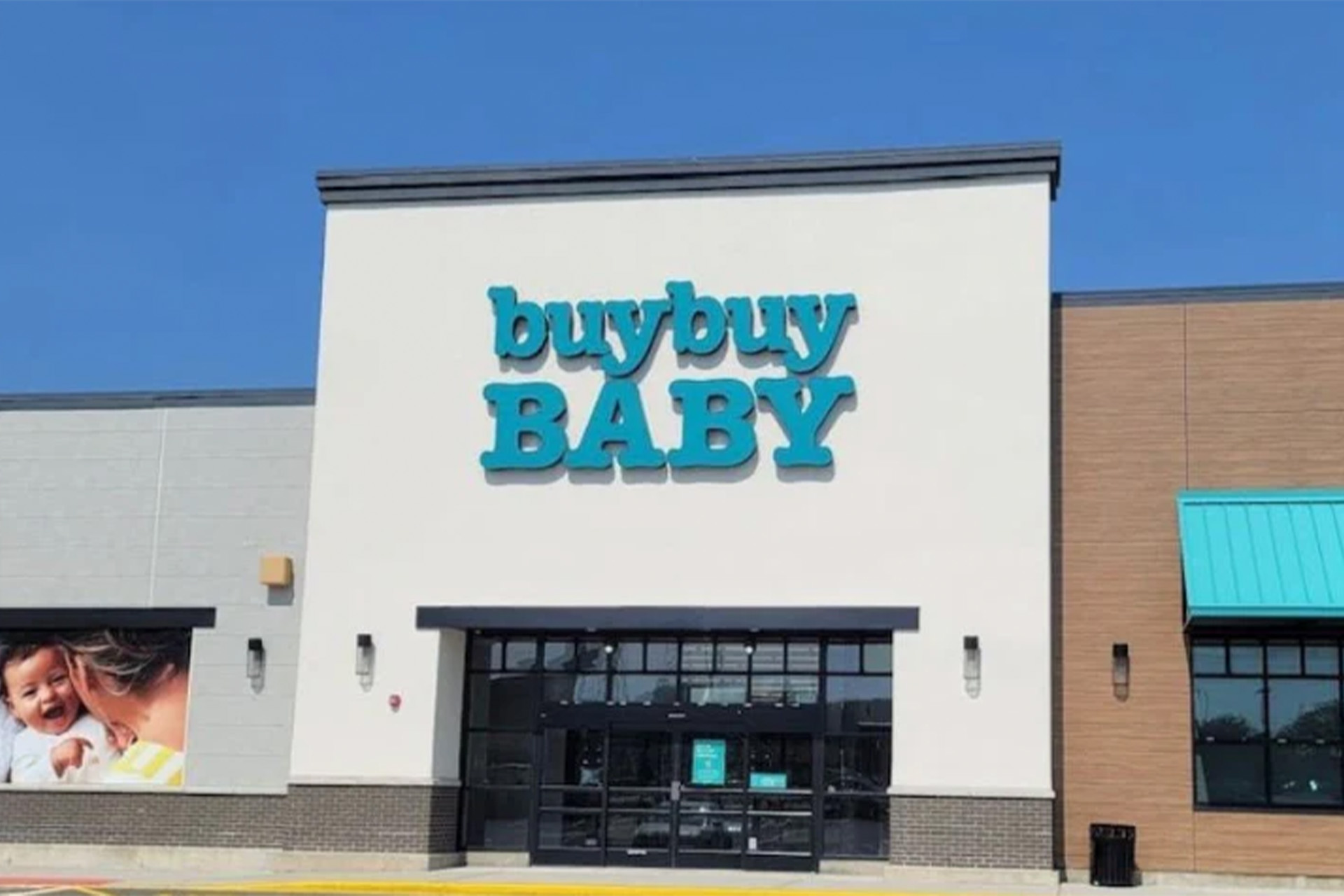
Buy Buy Baby
A Big Baby Day
The Overstock Anniversary ‘O’ Event, Baby Days, begins on April 24 and concludes on April 28. From a banner perspective, the promotion will feature an array of closeout deals focused on households and lifestyles including bargains on home furnishings and décor as well as outdoor furniture, bedding, mattresses and jewelry.
“We’re beyond excited to officially reopen Buy Buy Baby and reunite it with Bed Bath & Beyond,” said Adrianne Lee, president and CFO. “Baby Days is our way of celebrating with families, offering them incredible giveaways, curated collections from the most trusted brands and a fresh, innovative shopping experience.”
Lemonis added, “I have been focused on returning Buy Buy Baby to its original growth partner, Bed Bath & Beyond. The rebirth of this brand and digital security issuance mark a new beginning for an iconic American retailer. The tokenization of (Buy Buy) Baby offers an exciting opportunity to monetize the intellectual property and share in future success and growth of the retail business.”
On the Overstock efforts, Lee stated, “We are bringing back the incredible deals that made Overstock a household name and celebrating the ‘O’ digital security token offering by our subsidiary Commercial Strategies, Inc., on tZERO’s brokerage platform. This signals our commitment to the Overstock brand and our excitement around its intellectual property tokenization to unlock shareholder value.”
Since it emerged based on the purchase of Bed Bath & Beyond intellectual property by Overstock, Beyond has had changes in direction. The revival of Overstock as a clearance website followed, as did changes in Beyond leadership and business strategy and a revised business model Beyond is counting on to achieve profitability over the next several quarters. Vendors and retail observers are keeping a keen eye on the company to see if it can do what it plans.
The Store Picture
The recent spate of occurrences, as is recognized by anyone keeping an eye on Beyond, follow on a plethora of corporate activities earlier this year, including the deal struck with Kirkland’s Home. In early February, and just days after the Beyond announcement of the Buy Buy Baby acquisition, Kirkland’s obtained the requisite shareholder approvals of the partnership agreement, with 97% of votes cast in favor of the proposal, the company maintained. For its part, Beyond completed an $8 million equity purchase that was part of the deal, as well as the mandatory conversion of an $8.5 million term loan. With the transaction completed, Beyond has provided Kirkland’s with a total of $25 million in capital and owns approximately 40% of Kirkland’s outstanding shares of common stock.
In effect, the agreement makes Kirkland’s the development engine for Beyond’s banners, and Bed Bath & Beyond is first up for a physical “neighborhood” store concept set to debut later this year that will be smaller than the banner’s past formats. Plans call for a Buy Buy Baby brick-and-mortar presence, too, one that could include operations in Bed Bath & Beyond stores, store locations of its own or both.
Lemonis has described the development of Bed Bath & Beyond stores as critical to the plans Beyond has conceived and said that it will lean on Kirkland’s expertise in the establishment of physical locations just as Beyond is prepared to lend its e-commerce experience to Kirkland’s team.
In announcing completion of the deal, Amy Sullivan, Kirkland’s CEO, said, “Today marks a pivotal moment for Kirkland’s, as the completion of this transaction and ongoing value of our strategic partnership with Beyond begin to unlock new drivers of transformation following our efforts over the past year focused on revitalizing the Kirkland’s brand.
“Together with the Beyond team, we will continue to leverage Kirkland’s core strengths, including our merchandising, store operations and supply chain expertise and infrastructure to build a cohesive omnichannel strategy for Beyond’s portfolio of iconic brands,” Sullivan continued. “Plans are underway for our first Bed Bath & Beyond store opening later this year, and we look forward to continuing to explore opportunities to maximize the value of our partnership. We enter fiscal 2025 with additional capital, new opportunities for growth and an intense focus on aggressively addressing underperforming assets and delivering improved profitability.”
Lemonis added, “Our investment and the overwhelming shareholder support reinforces the value we see in Kirkland’s and its management team. Through this strategic partnership we are committed to leveraging the strengths of each company to drive long-term sustainable growth as we work together to build the omni-channel strategy across our family of brands.”

Kirkland’s Home
The Structure
The most recent Beyond initiative reflects the vision Lemonis has for the company, one that has evolved and that he has spent a number of occasions detailing as it has evolved.
In September 2024 at a Piper Sandler conference and the company’s own analyst day in New York, Lemonis spelled out how he wants to arrange the Beyond business as one centered on the development of a core structure that will gather data and cash flow from and invest time and money in businesses owned by or affiliated with the central organization. As such, Beyond has evolved into a latter-day holding company. The links it is forging extend beyond that companies owned or in which it has taken position. They also include current and planned affiliations with business providing financial and other services, from product assembly to shipping to credit. Although new to mainstream retailing, the model is similar to one that has shaped the other business Lemonis has been operating, Camping World, for the past couple of decades.
However, similar hardly means identical, particularly given the different consumer bases, the Beyond proposition to the consumer being more diverse than that of the RV lifestyle-oriented Camping World. The strategy and structure that Lemonis has pursued since he took on a leadership role in the Beyond organization also incorporates Overstock’s original asset-light approach, one that focuses on minimizing inventory and operations costs. Beyond is doing so while simultaneously establishing practices designed to avoid overburdensome customer acquisition costs by using data effectively and providing more customer engagement across multiple retail banners and the services.
Lemonis laid out the direction the business had taken at Piper Sandler Growth Frontier Conference on September 10, 2024, admitting that the strategy the company had embraced previously came in the aftermath of a mistake he made.
By that time, Beyond had developed some unique approaches to its business, including a global licensing program initiated for the Bed Bath & Beyond brand, and it acquired the IP of apparel-oriented flash site Zulily. The licensing program launched, covering Bed Bath & Beyond-branded home textiles through other retailers, including mass market, off-price and online marketplaces. The program also covers Bed Bath & Beyond locations already operating in Mexico, with negotiations in progress for stores in other key markets around the globe, including Korea.
The proposed deal with The Container Store, which would have included adding Bed Bath & Beyond departments to its stores, fell through over financial arrangements. Just weeks after the two companies reached an agreement, Beyond reported The Container Store was having trouble finding financing that suited terms of the arrangement. However, Beyond did not immediately pull out of the deal. The bottom dropped out in December of last year, when The Container Store filed for Chapter 11 bankruptcy protection with plans to become a private company.
The Learnings
As he took charge of Beyond, after serving on the board, Lemonis became determined to reshape the company by rebuilding Overstock and Bed Bath & Beyond to their traditional strengths.
“I came into this role in February of 2024, and the month prior to that, convinced the board to make certain changes to bring Overstock back as a subdomain,” Lemonis said.
As he took more responsibility for Beyond, he conducted a fourth-quarter conference call about a period when he was not in charge and before he could fully immerse himself in the operational details.
“I made the tremendous mistake,” Lemonis said, as he initially considered how a company that combined Overstock and Bed Bath & Beyond should operate. The formula he initially saw was a combination of retail operations that could produce $2 billion in revenues.
“As I got deeper, I had to walk that back,” he said. “So I take full responsibility for giving this idea of where I thought the company could go this year and then, a month or so later, having to pull that back.”
In effect, he said, key parts of the company were “broken” and unable to perform the functions envisioned. Overstock and Bed Bath & Beyond shoppers were confused by the combined entity, which was no longer just a furnishings off-price or a housewares destination. That doesn’t mean Beyond didn’t have prospects. First priority was getting Overstock up and running again. Lemonis said Overstock made a lot of progress quickly, relaunching in April and generating a run rate of $170 million by September despite Bed Bath & Beyond usurping its domain.
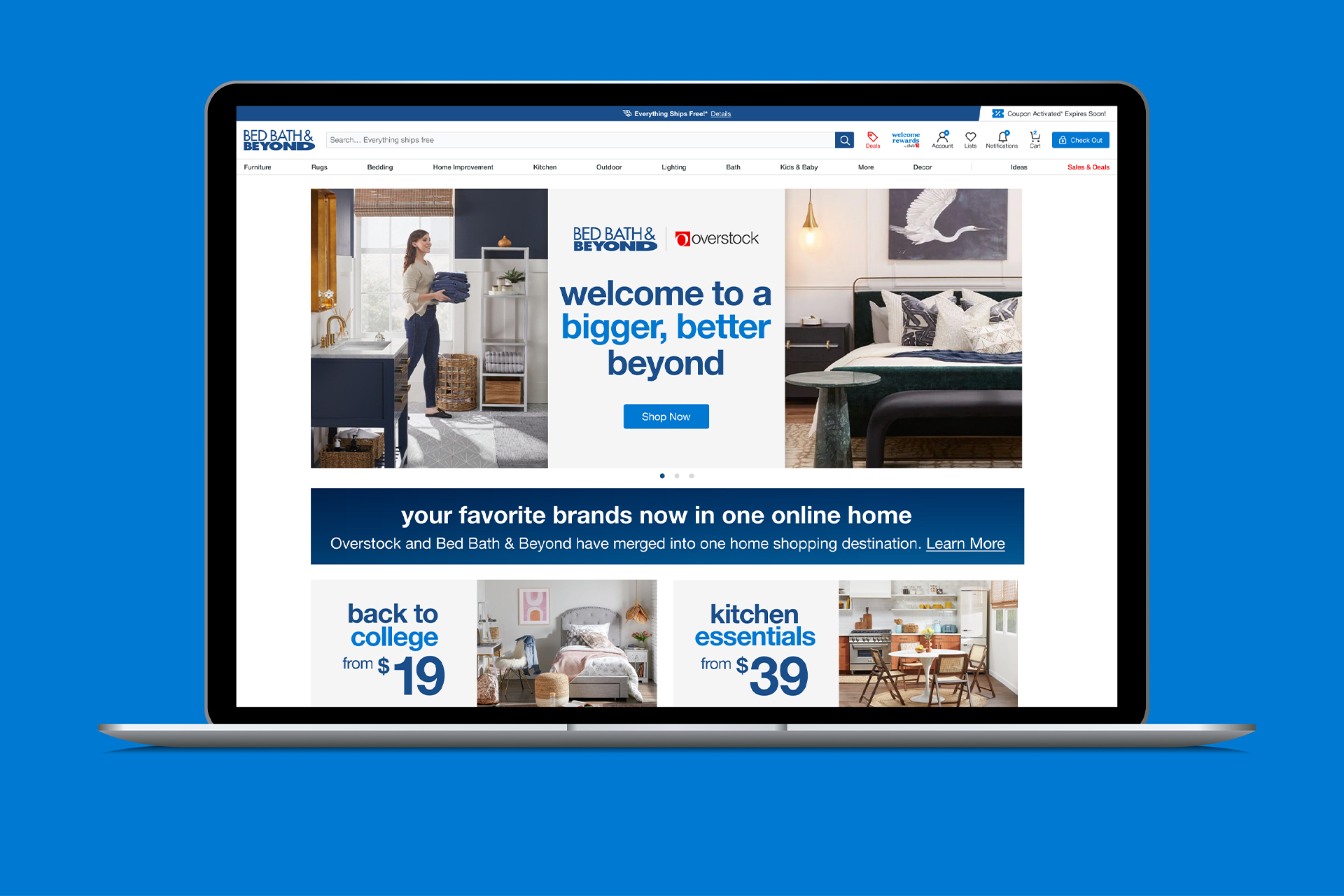
Combined Bed Bath & Beyond and Overstock Website
Still, the way the company swept Overstock aside and planted Bed Bath & Beyond in its virtual space created major challenges addressed through expensive promotion and discounting, especially in upholstered furniture and large-scale case goods. Designed to encourage purchase in categories that were not core to Bed Bath & Beyond operations nor central to consumer shopping visits, the remedy squeezed margins and weighed financials down with additional costs. Lemonis said he determined to reverse the trend.
“When those two brands merged together in the fall of ‘23, they noticed that conversion on the site and transactions on the site started to drop precipitously,” Lemonis said. “The reaction of that management team at the time was: Let’s increase site sales. So that’s margin compression. And let’s increase spend. The machine was broken. We’re starting to see the repair of that with sequentially improving margins and sequentially decreasing SG&A.”
Lemonis said his short-term vision and long-term vision are consistent and based on establishing the holding company structure. As envisioned, Beyond would be the owner of the data derived from all its operations, as well the intellectual property of the companies it has acquired.
“The businesses down below and the management inside of those are renters of the IP,” Lemonis said, detailing the holding company construction. “Their job is to generate positive contribution margin transactions and ultimately have a positive EBITDA on the bottom line in each of those brands individually. Don’t look at the aggregation of them. We don’t currently break them out, but our goal is to, in future years, show people the revenue that exists inside of those. But the purpose of all that is to accumulate consumer data not just name, address, phone number, but name, address, phone number, size of property, size of the home, when you bought it, your mortgage balance, who your mortgage lender is, what your credit score is and everything in between those chalk marks so we can start to do what I feel like I know how to do pretty well, which is to create affinity products and services up top.
“So if you visualize up top, that’s home warranties, shipping insurance, mortgages, credit cards and a global loyalty program much like you think about Bonvoy or Star Alliance,” he continued. “Down below, those brands are meant to do nothing but be profitable and feed that data up to the holding company so that the holding company has a zero cost of acquisition to be able to monetize that data.”
Prior to instituting changes, Lemonis said, Beyond was not going to deliver a bottom line that could provide multiples to the standard wanted, numbers that could demonstrate the health of the business, drive returns and, not coincidentally, satisfy the conditions of his options.
“I’m working for free, but I’m playing for options, so for me, building shareholder value in giving people a path where they can see where their value and my value, together, our value, monetizes is all that I’m focused on,” Lemonis said.
As he moved away from the initial assessment of what Beyond should be and looked at the value of the IP, the strength of the balance sheet and the whitespace created when Bed Bath & Beyond folded, Lemonis became convinced the model he had established with his other business, Camping World, could be applied effectively.
Taking Action
Lemonis said Beyond has initiatives in place to address the key challenges it faces. When Overstock and Bed Bath & Beyond converged into a single website under the Bed Bath & Beyond banner, consumers arriving at the site didn’t get an initial view of the furniture, rugs and patio furnishings they expected. The shift to a more housewares-heavy assortment wasn’t necessarily what the Overstock customer wanted to shop. The result was a significant drop in conversion. Eventually, the situation led to lower revenue and gross margin. Out of immediate necessity, Beyond increased discounting and promotions, especially on products such as upholstery and case goods now stocked under the Bed Bath & Beyond banner. With Lemonis leading, Beyond has focused on more profitable transactions.
One sign of customer confusion in the original shift when Bed Bath & Beyond supplanted the Overstock banner was an increase in metrics, such as cart abandonment, and consumers not going any deeper than the first page when they arrived at the website. Although average order value remained within historical norms, the orders delivered fell. So, consumers were ready to spend money if coaxed by deals.
An initial goal of Beyond’s activities was to get Bed Bath & Beyond and Overstock to a state where they theoretically would have been had they never been merged. That includes having all the merchandise on both sites available as would have been the case prior. Once that is accomplished, the product listings’ ad spend per SKU should return to a reasonable amount. Now, Beyond spends a lot more money to get a sofa sold on the Bed Bath & Beyond site than on the Overstock site, which has necessitated the shifting of upholstered furniture out of the Bed Bath & Beyond site to Overstock.
The movement of SKUs had to be gradual and employ SEO appropriately. A mass movement of upholstered furniture, to provide one relevant example, would be impossible to support properly and confuse consumers once again. The result would be a precipitous drop in sales. Indeed, Beyond is still reestablishing Overstock’s domain authority, after the name change on its site came with the replacement of buying guides, history, deep links and related internal structures. Until the internal support is back up to form, the ability to drive sales won’t be what it was.
Although enthusiasm can be a good thing, the company admitted, Beyond might have been a little too quick in bringing Overstock back. In hindsight, the rush to get Overstock up and running skipped some steps Beyond should have taken before relaunch. Still, the sense now is that within a few months or perhaps by the end of 2025, Overstock will be back where it needs to be.
Lemonis said that as the assortment becomes more appropriately allocated and internally buttressed, marketing spend will diminish even as item performance improves, which will be another factor in pushing Beyond to profitability.

Overstock Website
The evolution of Beyond over the past couple of years has also affected the development of the resurgent Overstock. Although closeout operations were initially emphasized at the time of Overstock’s relaunch, Lemonis said Beyond isn’t approaching the operation as exclusively or overwhelmingly closeout-oriented. In part, that’s because, in the asset light business model, the company wants to hold as little merchandise as possible. Overstock will balance closeouts with supplier deals, or programmed closeouts and the sale of slow-moving goods from its own banners and any affiliate retailers that partner with it, as well as suppliers.
The evolution of Beyond over the past couple of years has also affected the development of the resurgent Overstock. Although closeout operations were initially emphasized at the time of Overstock’s relaunch, Lemonis said Beyond isn’t approaching the operation as exclusively or overwhelmingly closeout-oriented. In part, that’s because, in the asset light business model, the company wants to hold as little merchandise as possible. Overstock will balance closeouts with supplier deals, or programmed closeouts and the sale of slow-moving goods from its own banners and any affiliate retailers that partner with it, as well as suppliers.
At the same time, Overstock continues to move away from the home-centric model adopted under the previous regime by resurrecting its assortment of jewelry, apparel and footwear. Lemonis noted Overstock adopted the home-centric model just at the time when housing sales were tailing down and, without products such as jewelry and footwear, the site lacked traffic drivers that had been popular with customers before the assortment change and can be effective lures when home-related categories are under pressure.
Lemonis said the company expects materially better fourth-quarter bottom-line results from the same period of last year and the third quarter of this year. The company is not only working to reset Bed Bath & Beyond and Overstock to better serve core customers, it also has begun offering affinity service including product assembling with Angi and product warranties and shipping insurance with Extend. The company maintained that both partnerships already are bottom-line accretive.
Kirkland’s Role
Under an agreement announced in October 2024, Kirkland’s will inaugurate the return of Bed Bath & Beyond brick-and-mortar stores. In the initial phase, according to the companies, Kirkland’s will develop five “neighborhood” Bed Bath & Beyond stores, taking the lead in crafting their approach to the consumer. At 5,000 to 15,000 square feet, the stores will offer a curated take on Bed Bath & Beyond’s traditional assortment. The deal also includes Bed Bath & Beyond shops in Kirkland’s stores.
Kirkland’s would own the inventory and develop the merchandising for the new Bed Bath & Beyond locations. As communicated by the two companies, Beyond and Kirkland’s anticipate creating an enhanced supply chain network to reduce costs, improve inventory management and drive revenue growth. Kirkland’s would join Beyond’s consumer data collective and global loyalty program as well as incorporating its financial services, including credit cards, and consumer protection services into its operations.
For its part, Kirkland’s stated, the company expects the deal to help it drive additional traffic and revenue while increasing conversion and lowering the costs of customer acquisition and retention. Kirkland’s merchandising, product development and sourcing teams will work with Beyond on creating enhanced store formats and supply chain functions.
By the time of its investor meeting a few weeks after the Piper Sandler conference, Beyond had further refined its model and its approach to advancing the company. Despite the demise of the initiative involving The Container Store, the deal with Kirkland’s remained critical and part of the evolution in management’s thinking about how the company could build out its model successfully, including an omnichannel retail structure. As an asset-light operation, vendors generally hold the inventory and ship it, which limits Beyond’s ability to influence them on prices unless it can hand over more orders. Beyond is applying its multi-platform retail business and the relationship with its affiliates, as well as its data delivery, to increase vendor prominence in the market and boost sales volume. With those provided, Lemonis said, suppliers are more inclined to negotiate a price that slides closer to the wholesale number, which gives retailers that accept products into their own inventory.
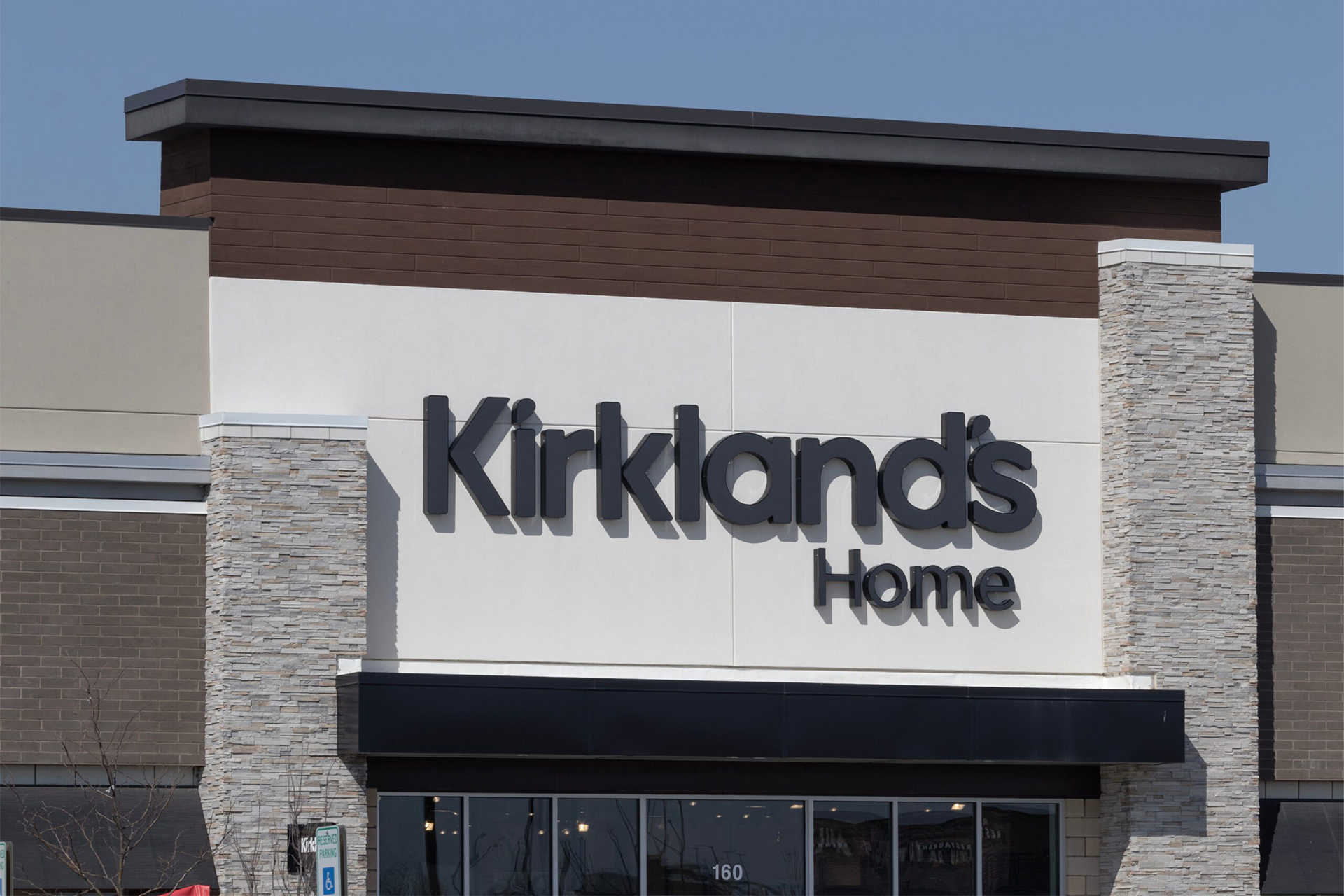
Kirkland’s Home Store
He said the idea behind the proposed transaction with The Container Store and completed transaction with Kirkland’s was “to put Bed Bath & Beyond back into an omnichannel experience,” he said. “When we look at that cooperative negotiation between said vendors and we can offer more distribution, shelf presence, we believe that the wholesale prices that typical retailers enjoy from those vendors will then be passed on to its asset-light partner.”
The potential of the model Beyond is constructing can be something that’s “much more than a cursory view of the economics suggest,” Lemonis said. “It’s our belief, and we’ve validated that already, if you sit with any vendor that was historically part of the Bed Bath and you can drive their revenue, you’re going to be able to negotiate, like Kirkland’s would or Container Store or Bed Bath would, an appropriate price. Our company has not been able to enjoy the benefits of what that wholesale pricing would give us. The way we’ve started to renegotiate with vendors isn’t ‘give me a better price.’ It’s ‘I’m going to give you more cash and you’re going to give me more margin.”
Lemonis said margin improvement, once the fundamentals that soured under previous management are addressed, is substantively reliant on getting better prices from vendors. He adds that, at a time when some observers have been wary of Beyond’s online model, others have been questioning the drive to get the Bed Bath and Beyond name back on stores, and operating stores, not closed ones that have convinced many consumers that the banner no longer exists.
“Many have been critical: Why are you investing in Kirkland’s? You’re going to open Bed Bath stores?” Lemonis said. “It’s very simple. We love being an asset-light model. We want to be more asset-light tomorrow than we are today, both in people and in hard assets. We want to look more like a tech and data company.”
To do that, however, Bed Bath & Beyond has to be on a better foundation that allows it to be competitive without extraordinary discounting. Better pricing will help the company achieve that.
“In order for that e-commerce core business to get back to the revenue we need, we can’t afford financially to spend what we’re spending to drive customers and to convert, inducing them with the kind of discounts and kind of spend that we’re operating with today,” Lemonis said. “We believe it’s possible to reverse that trend by offering them the omnichannel portfolio nobody replaced when Bed Bath went away.”
Vendors also can benefit. And Beyond can ask for margin for providing listings under multiple banners to drive orders and also with access to Overstock, where they can move damaged and open-box goods, as well as excess inventory and returns.
On the Horizon
As its evolution continues, Beyond will work with partners to additional advantage. Consumers will be able to pick up orders at Kirkland’s, for example, which should give Bed Bath & Beyond a particular boost. The company is talking with Kirkland’s leadership about putting together an Overstock outlet and a return center. The emergence of Bed Bath and Beyond locations and in-store shops should boost marketing efficiency by reminding people that the banner continues as a shopping destination.
The small neighborhood format Bed Bath & Beyond will be a particularly definitive statement of the banner’s return and one that should satisfy most customers. Lemonis said that, in its prime, 40% of Bed Bath & Beyond assortment generated 90% of revenue. The stores will put more emphasis on national brands than Bed Bath & Beyond did in its final merchandising manifestation and will reflect the banner’s traditional presentation. Bed Bath & Beyond continues operating in Mexico under license to Beyond, and Lemonis said the company is negotiating to bring the banner to more countries including Korea.
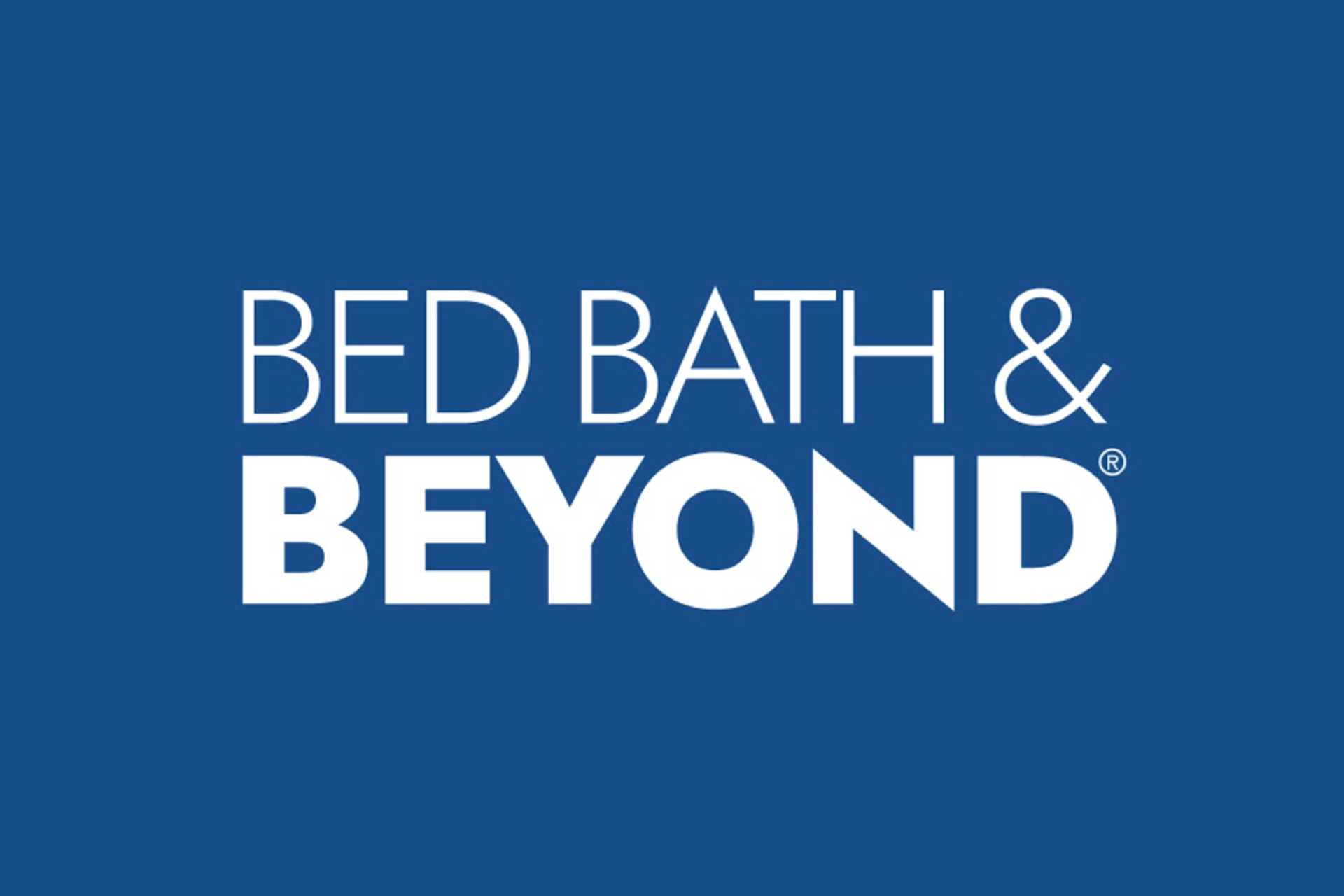
Bed Bath & Beyond Logo
The Consortium
In Lemonis’s vision for the company, Beyond will be a “consortium” of complementary retail operations and services for which expertise is focused and applied with “subject matter experts doing just what they know how to do,” he said. “And then we’ll find a shared services model that allows SG&A to come down and find a data link model that allows customer acquisition costs and retention costs to come down and not just for us.”
Under that structure, Beyond and its partners should enjoy efficiencies and advantages that can make them stronger performers in the marketplace, he indicated.
From a vendor perspective, Lemonis said bringing back major housewares brands and getting them to drop ship orders coming from Beyond banners is predicated on their desire to get product on shelves and in front of consumers as they did when Bed Bath & Beyond was thriving.
As it has advanced across the past few months, Lemonis said the Beyond executives have begun considering the business operations a little differently than they had. The concept of a top-down operation has given way to a “funnel model,” where Beyond is the foundation that will provide insights from customers who are already engaged with it through its several operations, even if they don’t know. Beyond will run data through multiple databases and create with a wealth of valuable information it can provide stores but also use to advance its own operations and to continue adding value. It isn’t just a matter of selling a customer buying sheets more sheets. Rather, the company will use information gathered from multiple sources to remain relevant to consumers over time by consistently anticipating their needs.
“I’m going to serve them up a predictive suite of products customized to their behavior, not my desire to make their behavior something different,” Lemonis said. “When you do that, conversion goes up, margins go up because you’re not selling on price, you’re selling on expertise and experience. This is the ultimate model we want Beyond to be.”
In that case, the individual businesses will have assets, including a stream of information that creates a competitive advantage, one that will be applied in a way that will be “journey triggering” rather than just a means of cross selling. Beyond operations and affiliates will have the ability to provide offers consistent with the individual behaviors no matter where within the larger consortium they shop.
As such, Beyond will understand and share across operations what products and services each customer needs and prefers through time and life occasions as the basis of ongoing engagement that generates less noise while addressing what works in the moment, whether that might be a room full of furniture, a stand mixer or a home equity loan.

